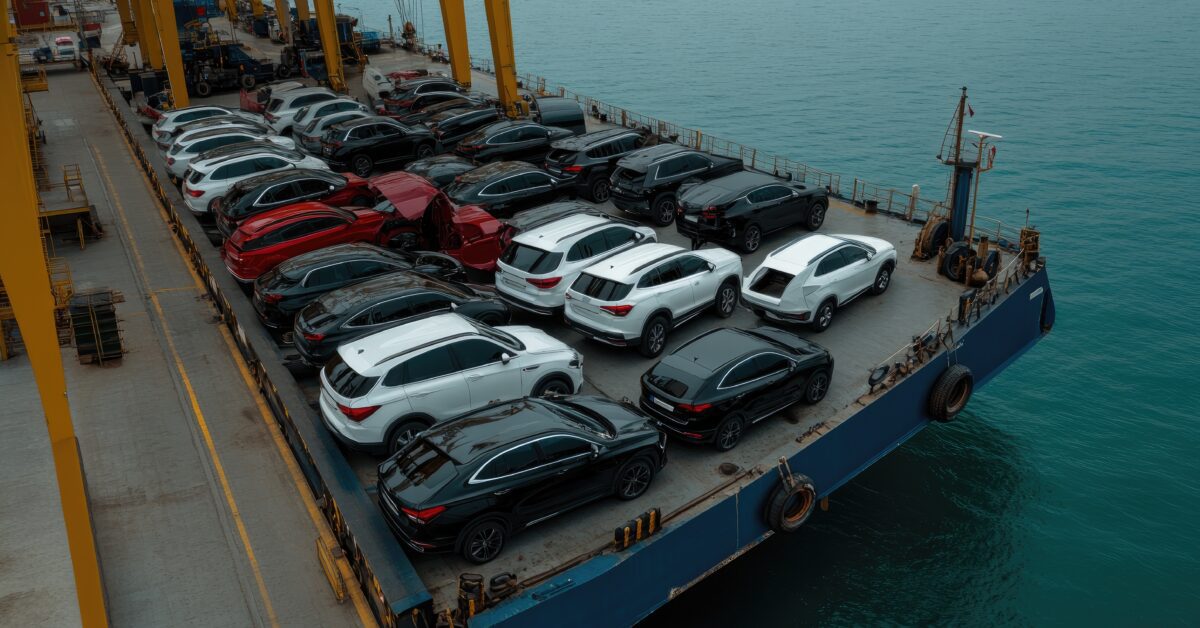
Find us on LinkedIn
On March 26, 2025, the US government announced that it will be imposing a 25% tariff on imports of automobiles and certain automobile parts. These changes came into effect on April 3, 2025, applying to imports from all countries.
The intention is to shift demand away from imported vehicles, which make up roughly half of the US light vehicle market by volume, and towards US-based manufacturing.
The challenge is that the modern automotive industry is highly integrated and deeply dependent on global production networks, cross-border supply lines and international markets both for sourcing raw materials and selling finished products.
As such, they rely on low-inventory, just-in-time planning, seamless deliveries across borders, and a guarantee of affordable parts from supply networks in other parts of the world.
These supply chains are often long and complex. For example, engine rods are typically made from aluminum sourced in the US, which are shaped and polished in Canada before being sent to Mexico to be assembled into pistons and then returned to the US to become part of an engine.
In this new world of tariffs, these engine rods, which cross borders four times in this scenario, will be hit with tariffs (not to mention bureaucratic delays) on each crossing. As a result, an analysis by S&P Global projected that within a week of enforcement, one-third of North American vehicle production could be disrupted, equating to more than 20,000 vehicles per day lost due to parts shortages and logistical issues.
In this blog, we will explore the likely impacts of the tariffs on automotive OEMs, as well as why strategic adaptability is the only long-term solution for businesses to maintain a competitive edge in the face of unprecedented political and economic disruption.
What The New Tariffs Mean For Automotive OEMs
Let’s summarize the impact of these tariffs for OEMs.
Rising Costs
The newly imposed tariffs could drive up the cost of replacement automotive parts by anywhere between 25% and 100%, putting significant upward pressure on vehicle maintenance and repair prices for consumers.
The Anderson Economic Group projects that for vehicles relying on parts from Canada and Mexico alone, tariffs could result in cost increases ranging from $4,000 to $10,000 per unit, depending on the make and model.
This comes at a time when most automakers already operate with tight margins. Absorbing a 25% surcharge on parts without passing on costs is a steep ask. But if they do pass it on, they risk lower demand, which in turn increases cost per unit and reduces factory throughput—impacting both profitability and production efficiency.
Delays And Bottlenecks
Beyond the financial burden, the new trade measures are causing major logistical disruption. Shipments that once flowed smoothly now face customs hurdles (including documentation of origin, tariff assessments, and declaration formalities), leading to processing delays and supply chain congestion.
In some cases, OEMs are even being forced to pause production lines while they await parts stuck at border checkpoints. These bottlenecks don’t just hit manufacturing, they disrupt the availability of service parts, delay warranty fulfilment, and make it harder to meet promised delivery times, directly impacting the customer experience.
Compliance
Tariffs aren’t just about paying more—they come with a complex layer of compliance obligations. OEMs must now invest in customs expertise, reconfigure IT systems to accurately track component origins, and update their inventory management to reflect the new regulatory landscape.
Staying ahead of ever-changing trade rules and classification systems requires dedicated resources, which drains time, money, and focus away from other priorities. But the risk of getting it wrong can be severe, making careful, ongoing compliance a non-negotiable part of doing business in this new environment.
However, the tariff situation is changing constantly. The challenge, therefore, is not so much how to deal with this particular iteration of automotive tariffs, but how your business needs to change so it can survive continuous political and economic change and uncertainty.
Uncertainty And Strategic Adaptability
The automotive US tariffs are just one example among many of global disruption events that are becoming more frequent, more unpredictable and more impactful on businesses.
For decades, OEMs have designed their businesses to be slow, stable, and resistant to change—a structure built to minimize risk and maximize efficiency.
When faced with disruption and uncertainty, the temptation is to find a superficial fix: tweaking the dials here or there to try to manage the impact.
For tariffs, that might mean simply raising prices across the board and hoping for the best.
But instead of asking, ‘how do we minimize the impact of these tariffs?’, we can ask ourselves, ‘How can we strategically build adaptability, flexibility, and resilience into the core of our business?’.
Because the truth is: today, it’s tariffs; tomorrow, it will be something else.
The businesses that will thrive in this new era aren’t the ones that survive the current wave of disruption—they’re the ones that use it as an opportunity to weave adaptability and resilience into the core DNA of their business.
You survive, not by bracing against uncertainty, but by adapting to it.
Conclusion
How do you become adaptable?
Check out our guide ‘6 Ways The Automotive Industry Can Turn Tariffs Into Opportunity With Data And AI’ for concrete steps that businesses can take to put flexibility and adaptability at the great of their business.
